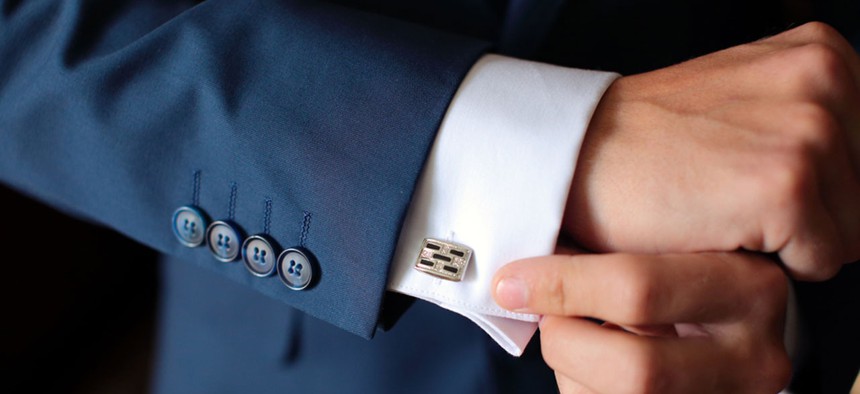
Andrey Kucheruk/Shutterstock.com
The Science Behind Why We Dress Up
Dressing up every day is an important responsibility, according to Tim Gunn and sartorial science.
Fashion guru Tim Gunn felt out of place at the James Beard Foundation Food Conference in New York—”like a mongrel at the Westminster Kennel Club,” he said at the Oct. 19 event. But he was, as ever, put together in a pinstripe suit and printed tie, and wasn’t too shy to share that dressing up alleviates this anxiety, making him master of the message.
“I believe in the power and appropriateness of semiotics,” said the design professor turned Project Runway mentor and celebrity. Using signs and symbols, clothing and accessories, people make magic and influence perception, according to Gunn and sartorial science.
A series of five studies by Columbia University social psychologists on the cognitive consequences of formal clothing on 60 students concluded that dressing up makes people feel and seem more powerful and impacts their thinking and speech. Subjects in formal clothing spoke more abstractly and less concretely, and this was unrelated to socioeconomic backgrounds. For example, instead of describing mechanical actions, like saying “I’ll lock the door,” they’d use intentional speech by saying “I’ll secure the house.”
When subjects dressed informally they felt, acted, spoke, and thought differently, and others responded according to those signals, regardless of their upbringings. The findings were consistent with other studies on formal speech, which have found that formality influences social distance—how approachable someone is—which is associated with feelings of personal power, competence, and abstract thinking. When dressed up more formally, subjects were less approachable but felt and appeared more powerful, but the opposite is true when dressed casually.
This may explain why Mark Zuckerberg, among other informal Silicon Valley stars, wants to change the world in a t-shirt, signaling approachability with his clothing. When it comes to fashion, form is function.
It’s also a defense mechanism, as Gunn points out. In the words of Bill Cunningham, beloved bicycling fashion photographer who sought inspiration on the street, “Fashion is the armor to survive the reality of everyday life.”
Clothes cover nakedness and anxiety, and it subconsciously influences how others perceive someone, so getting dressed is an everyday exercise in semiotics. “It’s a very important responsibility, and we need to accept that,” Gunn told the crowd.
His look, the business suit, is informed by time spent in Washington DC, where Gunn came to appreciate uniformity. Indeed, the suit evolved from European military and British court clothes into the go-to gear for American men after World War I. According to The Atlantic, “This newfangled vestment was so darn easy to wear! It appeared on everyone from cab drivers to business executives, and made all appear polished and professional.”
Ladies can thank Coco Chanel for the little black dress, pockets (she needed somewhere to hold her smokes), and the prototypical female suit, which was designed in Paris around 1915. Without Coco there would perhaps be no Hillary Clinton-pantsuit icon for president.
Still, sales of multitasking sportswear—yoga pants that do dinner, for example—are eating into profits of traditional, less flexible gear. With more people working online, dressing down is de rigueur—and that’s OK, except you’ll be with you all day, feeling slovenly.
Dressing to impress yourself works on many levels and doesn’t demand that you conform to a particular look. Just pay attention, according to Gunn, and wear what you will. He offers no specifics, just advising people to own their looks. As he’d say on Project Runway: “Make it work.”
NEXT STORY: How to Spot Leadership Potential






